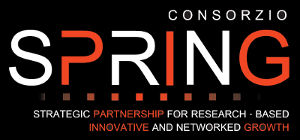Goals
The competitiveness of foundries takes place through innovation aimed at efficiency and quality.
SINFONET is the Regional Centre of Excellence for:
- Research, development, innovation and technology transfer, digitisation
- Integration of foundries with suppliers (services, materials, technologies) and engineering companies
- Training and qualification of human resources in scientific, innovative and multi-disciplinary fields
- Participation in calls for funding
- Internationalization and identification of new markets
SINFONET believes in the Foundry as the "Leader" of an entire production chain: the foundry must efficiently integrate the skills, products and services of all suppliers drawing on the experience of Innovation and Technology Transfer gained over the past 15 years (synergies between universities and companies) in favour of maximum Transversality for IT systems, mechatronic devices, energy optimization, technological, management, numerical and metallurgical models of process simulation.
Areas of activity of the SINFONET network:
- based on enabling technologies such as nanotechnology and advanced materials, advanced production systems, ICT
- knowledge-based approach (integrated and transversal along the supply chain and towards end-users), and no longer on resource consumption
- environmental sustainability (use of recycled metal alloys, minimisation of waste, and waste of resources and raw materials)
- The human factor: new specializations, skills, professional figures (and therefore employment)
- "cross-fertilisation": involvement of suppliers and end-users, targeting a wide range of markets
- advanced engineering calculation techniques (process simulation, process-product integrated design, equipment design),
- innovative automation systems for the production of cores and models, tool lubrication, handling and pouring/injection of liquid alloys, machining on raw castings,
- intelligent systems (based on temperature sensors, pressure, metal feed, gas detection) for real-time monitoring, control and process optimization,
- advanced models of correlation between physical quantities involved in processes, metallurgical and microstructural characteristics, final product performance,
- predictive tools for the economic aspects of the process (real-time cost models) and the environmental impacts of the production cycle (Life Cycle Assessment methodologies).

